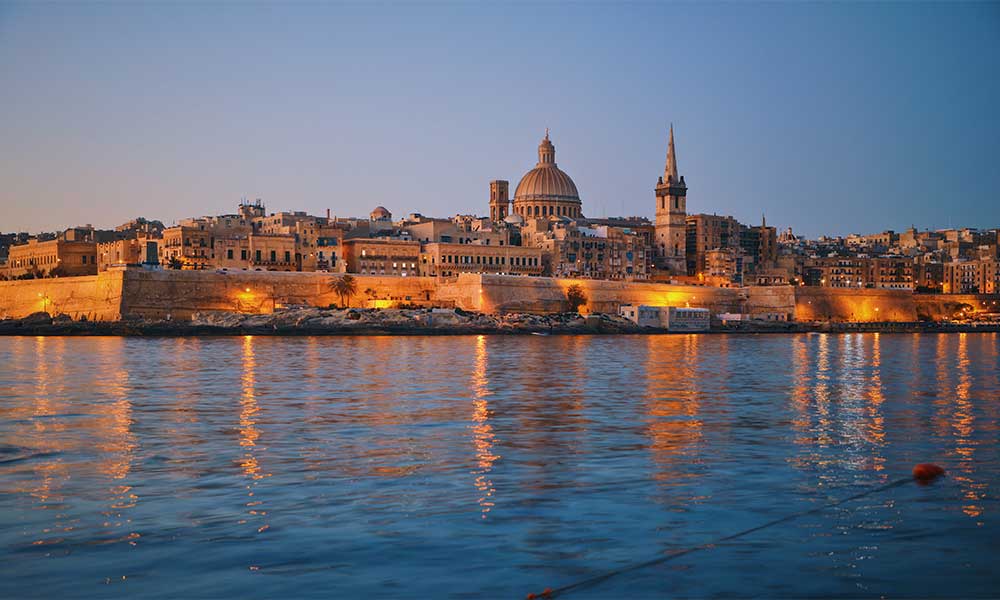Over the past 20 years, historian Stanley Cassar Darien has been the go-to guide for those who want to explore Malta, arranging visits for heads of state, embassies, VIPs and TV crews. Born and bred in Malta, he has a deep appreciation for history, local culture and Malta’s Jewish heritage, and takes visitors to hidden places that most guidebooks don’t mention. In this interview, Cassar Darien shares the secrets of the island country’s Jewish history.

Where is Malta? Malta is part of the Mediterranean archipelago of three sister islands: Malta, Gozo and Comino, located off the coast of Sicily. It is a member of the EU. In addition to Maltese, English is spoken and it is a safe destination, much less crowded than mainland Europe.
Can you tell us about the origins of the Jewish community in Malta? The Jewish community in Malta has a rich and diverse history spanning over 3,000 years. The first Jews arrived in Malta with Phoenician traders in the 9th century BCE. There is evidence that at the time the Phoenicians were occupying Malta, Jews landed on Gozo, a sister island located three miles off the coast, which also has a rich history spanning thousands of years. The legacy of early Jewish settlers can still be seen today in the catacombs in Rabat, where archaeological findings such as carved menorahs and other symbols indicate a Jewish presence circa the 4th and 5th centuries CE.
Is there an active Jewish community in Malta today? The community is relatively small, with estimates ranging from 100 to 250 members, mostly of Sephardi origin. Despite its small size, the Jewish community in Malta is vibrant and active, and continues to practice and celebrate Jewish holidays, traditions and culture. Malta maintains full diplomatic relations with Israel, and there are regular interactions between the two countries.
What are some key Jewish historical sites travelers can visit?
Malta
• Valletta: The capital, and a UNESCO World Heritage Site, Valletta is home to the Ta’ Xbiex Synagogue and the Jewish Community of Malta. The synagogue was dedicated in 2000, becoming the first property owned by the Jewish community in over 500 years. The previous synagogue in Valletta closed in 1995 due to structural problems.
• Mdina: Known as the “silent city,” this walled historic former capital features narrow streets, ancient architecture, and a former Jewish quarter, including the Old Jewish Silk Market.
• Birgu: One of the Three Cities across from Valletta features Jewry Street, a site of past Jewish presence.
• Jews’ Sally Port: This historic entrance in Valletta was used by “free” Jews traveling to the city.
Gozo
• Ggantija Temples: A visit to the Ggantija Archaeological Park (a UNESCO World Heritage Site) in Xaghra reveals a remarkable piece of history—a Phoenician inscription on the floor of the southern temple, which translates to “To the love of our Father Jahwe.” This ancient symbol of faith is a poignant reminder of the island’s early Jewish roots.
• The Citadel of Gozo: This majestic fortress perched on a hilltop is another must-see destination. Like Mdina on Malta, the Citadel’s imposing walls hide a wealth of history and a stunning cathedral. While the Jewish community primarily resided in the surrounding Rabat area, there’s evidence to suggest that some may have lived and traded within the Citadel’s walls, particularly on Granaries Street. Posted signs note the “Jewish Quarter” and indicate that the street along the north side of the cathedral was where Jews lived in medieval times.
Comino
• The island is home to a serene retreat where the renowned Jewish mystic Avraham Abulafia lived in the 13th century, producing significant works on Kabbalah. During his time on the island, Abulafia penned influential works such as Sefer ha Ot (“Book of the Sign”) and Imrei Shefer (“Words of Beauty”) and his vision for a unified faith continues to inspire to this day. Born in Spain in 1240, Abulafia’s teachings emphasized the unity of all faiths.
Jewish Cemeteries
• Kalkara Jewish Cemetery: Established in 1784, this is Malta’s oldest surviving Jewish burial ground, featuring 12 identifiable graves from 1820-1834.
• Marsa Jewish Cemetery: Built in 1879 and opened in 1887, this cemetery contains tombs of Jews from various European countries, including Spain, Central Europe, and Russia.
• Ta’ Braxia Cemetery: A historic cemetery in Valletta used from 1834 to 1880, featuring around 120 graves, with roughly a quarter dedicated to infants and children.
Jewish Visitor Information
The local synagogue of the Maltese Jewish community holds Friday night and Saturday Shabbat and holiday services. For more information contact President Reuben Ohayon by email: isranam@yahoo.com or eliyahu@onvol.net.The Chabad Jewish Center of Malta provides kosher food options, and takes orders for lunches, but there is no kosher restaurant on Malta.

